6. Sling Blade (1996, Dir. Billy Bob Thornton)
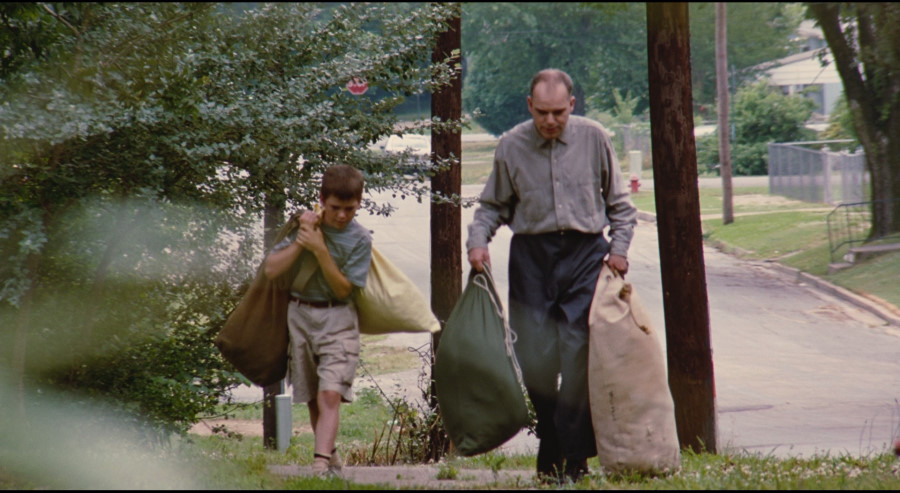
From the first moments of Billy Bob Thornton’s film about Karl Childers, it’s clear that a unique cinematic experience is about to unfold. Thornton, who writes, directs, and plays Karl (beneath an unrecognizable croaking voice and Thornton’s jutting out of his own jaw) crafts a southern tale of misanthropy that places Karl alongside a great many of the 1970s outcasts, who continually found their way into the protagonist role, rather than being relegated to supporting duty.
It is because Karl’s view of the world is simple and his behavior different from our own that the audience (like the characters in the story) initially see him as an outlier beyond normalcy. While it is not the late-60s outlaw biker motif of Easy Rider (1969, Dir. Dennis Hopper), or the aimless drifters of Scarecrow (1973, Dir. Jerry Schatzberg), Karl is a misanthrope nonetheless.
Unsure of how to function outside the mental institution where he has been since killing his mother and her lover as a teenager, Karl is set free. He makes his own family by befriending a young boy and his mother and a gay grocery store manager in a similar way to films like One Flew Over The Cuckoo’s Nest (1975, Dir. Milos Forman), with its ragtag group of misanthropes united by an unlikely person.
The center of the film is Thornton’s performance as Karl. The choice by Thornton to focus on a main character whose thoughts and motivations remain largely inaccessible to the audience has roots in the 1970s, as those characters often speak and behave in ways that remain opaque.
7. Up In The Air (2009, Dir. Jason Reitman)
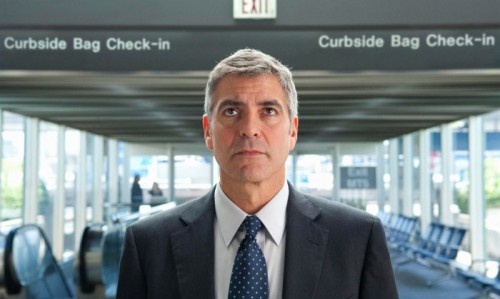
George Clooney brings affable charm to the role of Ryan Bingham in Reitman’s adaptation of a novel of the same name. At its heart, Up In The Air is a story of arrested development – Ryan lives in self-imposed exile, forever on the road, avoiding connection with friends, romantic partners, and even family members. It’s when he begins to discover a connection without looking for it with Alex (Vera Farmiga), a businesswoman who appears to be a kindred spirit that he begins to take steps to change his life.
What aligns this film with the 1970s aesthetic is its choice to deny Ryan the true connection he is seeking. In a scene out of a thousand romantic comedies, Ryan races to Chicago to surprise Alex, ready to commit to her and settle down in a new life. When he opens the door and discovers she is married and has children, the narrative invites the audience to question whether it’s too late for Ryan to get back what he’s lost.
After confronting Alex, Clooney’s Ryan retreats into the skies after his heartbreak. The ending is one of the darkest that mainstream Hollywood has produced – the deafening silence of the air, the endless emptiness as Ryan floats through it, ends the film on a note of utter, quiet despair as the central character chooses total isolation. The sounds of silence that accompany the film’s final images recollect one of the most iconic endings of the Hollywood Renaissance, the last moments of The Graduate.
In that film, after Dustin Hoffman’s Ben and Katherine Ross’s Elaine have ditched her wedding, defying her family and especially her mother Mrs. Robinson (Anne Bancroft), Ben’s erstwhile lover, the film ends on a note that suggests that the action has all been for not. It’s not happily ever after. It’s ‘Now what the hell do we do?’ Up In The Air recycles this idea for the 21st century, stranding its protagonist on a deserted island in the sky of his own making.
8. Captain America: The Winter Soldier (2013, Dirs. Anthony and Joe Russo)
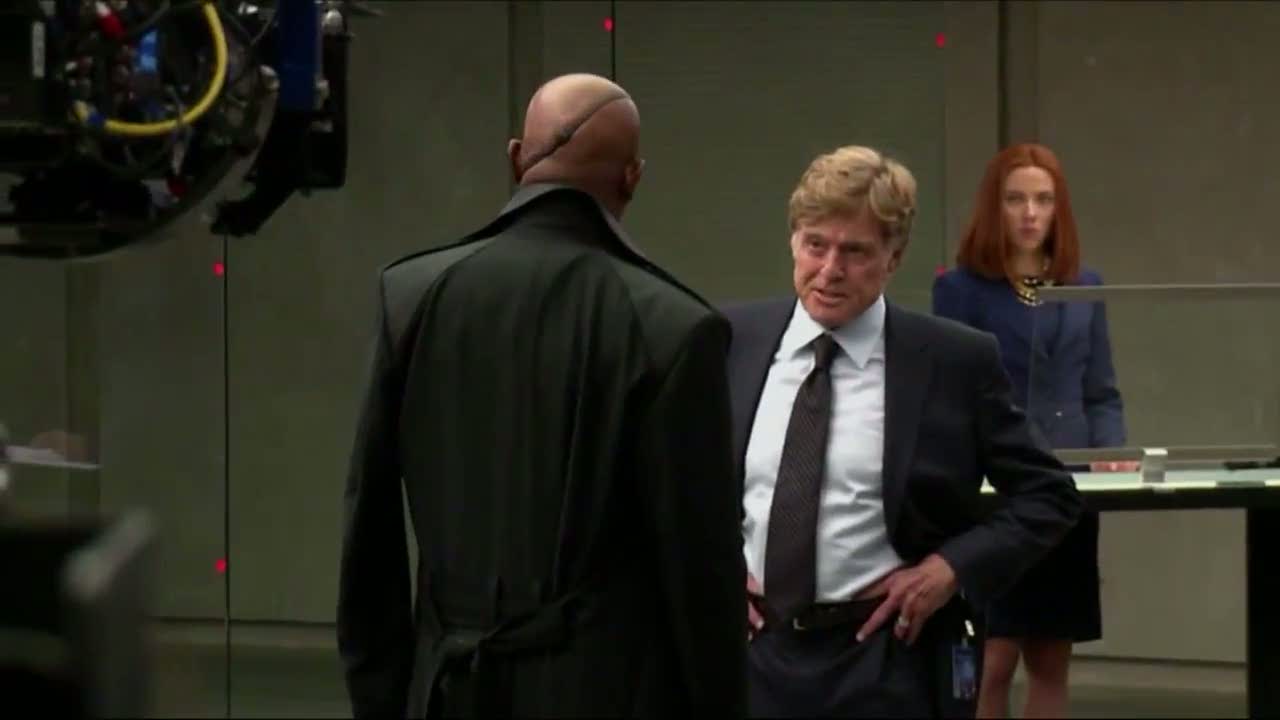
The sequel to Captain America: The First Avenger (2011, Dir. Joe Johnston) shows how malleable the Marvel movies can be. The first entry, a WWII combat film that borrowed heavily from war movies of the 1940s and 1950s, ably situated the patriotic hero in a genre to which he was well suited.
The second film makes an altogether different, though natural choice in relying heavily on the 1970s conspiracy thrillers, including 3 Days of the Condor (1976, Dir. Sydney Pollack), The Parallax View (1974, Dir. Alan J. Pakula), and All The President’s Men (1976, Dir. Alan J. Pakula).
The basic plot follows the structure of those films, as Captain America is betrayed and on the run, unsure of who he can trust, and how deep the conspiracy goes. With assassinations, surveillance, and espionage all key themes of the film, it’s easy to see both a story-based and production relationship to those earlier films.
The details of the conspiracy are slowly revealed as Captain America and Black Widow evade capture and dig through warehouses and digital files in a desperate search for the truth, reminiscent of 3 Days of the Condor most heavily. Light is sparse, as the locations are shadowed and hidden truths lurk just around every corner.
The conceit is helped by the presence of Robert Redford, playing Alexander Pierce, an intelligence bureaucrat with a sinister plot that is slowly revealed as the film progresses. The hunted (his Joseph Turner in Condor) becomes the hunter (Pierce) of Captain America, Black Widow, and Nick Fury, destabilizing the Marvel universe and showing just how deep the rabbit hole can go.
9. Out of Sight (1997, Dir. Steven Soderbergh)
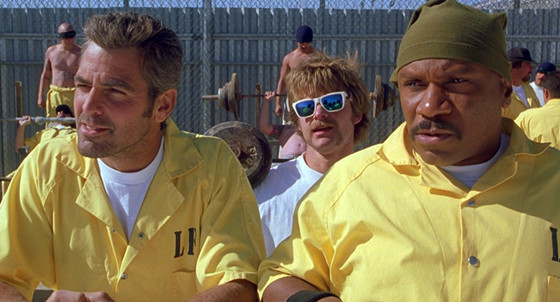
One early scene in this crime thriller based on the novel by genre guru Elmore Leonard features Clooney’s Jack Foley, bank robber extraordinaire and prison escapee, having a conversation with the federal marshal he’s kidnapped, Karen Sisco (Jennifer Lopez), about movies of the 1970s.
They discuss Faye Dunaway and her roles in Bonnie and Clyde, 3 Days of the Condor, and Network. Soderbergh is wearing his influences on his sleeve here, as he signals to us that the film he’s most trying to make is indebted to crime pictures of the 1970s like The Getaway (Sam Peckinpah) and The Hot Rock (Peter Yates).
Throughout the film, the lines between cop and criminal are blurred as the romantic involvement between Foley and Sisco ebbs and flows. These actors are joined by a collection of colorful supporting characters – a gangster (Don Cheadle), a corrupt businessman (Albert Brooks), and Jack’s morally conflicted partner (Ving Rhames) – each of whom lends a 1970s aesthetic to the proceedings in their performance choices. These characters are charming, but psychotic; pathetic, but honorable; pious, but criminal.
The film’s most well-regarded sequence is the courtship of Jack and Karen at the top of a snow-streaked hotel bar, during which Soderbergh becomes his most experimental in a film full of nonlinear storytelling. Keith Phipps of The Dissolve says “Out Of Sight’s editing recalls the late-1960s and early-1970s work of John Boorman, Richard Lester, and Nicolas Roeg, with the lattermost’s famous Don’t Look Now love scene providing a model for Jack and Karen’s lovemaking.”
During the sequence in the hotel, Jack and Karen (in the bar) discuss the unlikelihood of their attraction coming to any meaningful fruition, while intercutting with them undressing in Karen’s hotel room. The scene is romantic, but it’s undercut by the inevitable: this relationship is doomed, not because these two people aren’t attracted to one another, but because the sides they have chosen (him a criminal, her a federal marshal) will stand in their way.
It’s a narrative victory because it’s not just another sex scene; instead, the scene is about two people finding the only moment of real connection they’re likely to ever get.
10. Mud (2012, Dir. Jeff Nichols)
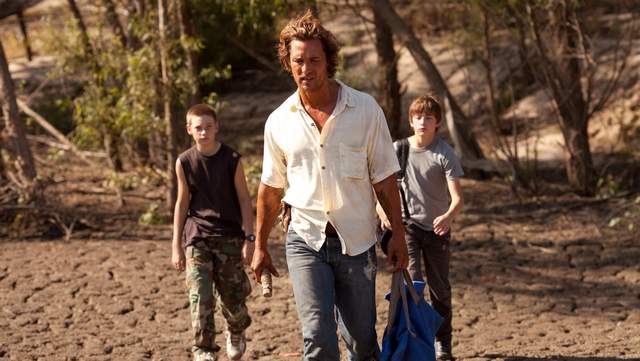
On the DVD commentary for Mud, Nichols describes his film as “a Mark Twain short story as filmed by Sam Peckinpah.” While Nichols doesn’t incorporate the jagged, staccato editing style that Peckinpah made famous with The Wild Bunch (1969) and his later movies, his film does capture the mythical ethos of those films. Matthew McConaughey’s Mud, hiding out on an island in the middle of the Mississippi River and living in a boat in a tree, seems like a folk hero in the same way that Peckinpah’s Wild Bunch and Billy the Kid do.
The casting of Sam Shepard also creates a link to the 1978 Terence Malick film Days of Heaven, much of which is about man’s relationship with nature. Mud’s forest hideout feels an awful lot like the forest sanctuary created by Kit (Martin Sheen) and Holly (Sissy Spacek) in Malick’s Badlands.
The film’s collection of colorful supporting characters, including Ray McKinnon’s Senior and Reese Witherspoon’s Juniper, ably support the strong performance at the center of the film by 14 year-old Tye Sheridan, playing Ellis, who sees Mud as a heroic, mythical outlaw in the tradition of both Peckinpah and Twain.
Nichols’s consistent commitment to location shooting and authenticity lends the whole film a guerilla feel, in the tradition of those strong 1970s films that eschewed sets and control in favor of spontaneity. Nichols has a great eye for the landscape, and many of his scenes would feel right at home in 1973’s Pat Garrett and Billy The Kid (Peckinpah), Bonnie and Clyde (1967, Dir. Arthur Penn), or either of Malick’s classics.